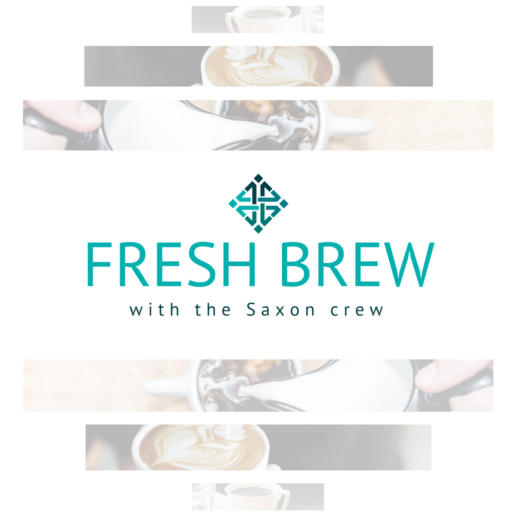Denied Life Insurance? Here Are Your Next 3 Steps
Were you denied life insurance coverage? Many applicants who fall into the “impaired risk market” understand they're up against a hurdle or two when applying for life insurance, but it doesn't make it any easier when they're denied coverage. Read this blog post for the next steps you should take after being denied life insurance coverage.
It’s tough to learn that the life insurance company you applied to will not be offering you coverage, especially if you were fully expecting a yes!
You may fall into the “impaired risk market,” which means you have something in your background that makes you a higher risk for dying prematurely—think things like diabetes, obesity, a previous cancer diagnosis or even a history of DUIs.
While many applicants with this type of history understand they’re up against a hurdle or two, it’s not any easier to be denied life insurance coverage. But, often times, it doesn’t mean the hunt for an approval is over.
There may still be options, which include applying to a more suitable company or applying for a different policy type.
Here are three actionable steps you should take if you’ve been denied life insurance.
1. Collect information. Before an insurer denies an application, they collect lots of data from several sources to evaluate your risk. If the risk is high enough, you are either rated, postponed or denied. In any of these circumstances, requesting more information on the reason for denial is your right.
Upon request, the carrier can provide detailed information on why an applicant is declined, whether it was due to medical history, current exam results, driving record or something else. Denials from current exams tend to be the most shocking, as you may not know about an illness or disease beforehand.
2. Confirm the results. Errors can happen. Wires can be crossed. Double check the data that was provided to the underwriter. If poor exam results were cited as the cause, confirm it with your primary care physician. In some cases, a company may simply deny coverage because of new, undiagnosed lab results, even if there is little cause for concern.
In other scenarios, you could be denied for occupational or recreational hazards, criminal records and even financial distress. Having records such as these, which aren’t updated or detailed enough, can lead to postponement or declines because the underwriter simply can’t assess a proper risk profile.
3. Work with an agent. Even with proper research, the first company you apply to isn’t always necessarily the best. Passing along detailed information to an agent can allow them to search into better options. A well-trained high-risk life insurance agent can assess information thoroughly and find a better fit for you.
But you also need to understand that applying to another carrier is an option only if the reason for denial (such a diabetes) is one another may accept (because your diabetes is under control with medication). Each life insurance company adheres to its own set of underwriting guidelines, meaning identical applications to separate carriers could yield different results.
If the root cause for denial is too great, a different type of life insurance policy altogether may be the last resort. Utilizing “graded” or guaranteed products make life insurance possible for those with pre-existing conditions or unfavorable risk profiles. While they cost more and typically come with maximum death benefits, they can be a solution.
Saving in the Long Run
After being approved for life insurance, keep an eye out over the next few months or years. Depending on your situation, you might have options to lower your rate. Here two quick examples:
Let time pass. Certain impaired risks simply require more time to pass between diagnosis and the time of application. As medical records and follow-ups are recorded, and symptoms pass or become stable, your rates can come back down. In addition, concerns related to a driving record or criminal record may also just require a certain amount to have elapsed where the offense is either removed or settled.
Check the workplace. If life insurance is offered through group benefits in the workplace, it could end up being more affordable, based on the program offered. It could also lead to filling in coverage gaps a graded or guaranteed policy left behind.
There is no one-size-fits-all regimen to combat a declination. However, taking these steps could alleviate the stress and annoyances that make finding coverage so daunting.
SOURCE: Fisher, J. (10 June 2019) "Denied Life Insurance? Here Are Your Next 3 Steps" (Web Blog Post). Retrieved from https://lifehappens.org/blog/denied-life-insurance-here-are-your-next-3-steps/
Who Can I Name as a Beneficiary on My Life Insurance Policy?
Wondering who you can name as a beneficiary on your life insurance policy? A beneficiary is usually the person or people who will receive your life insurance payout after you die, but it can also be a trust, charity or your estate. Read this blog post to learn more.
First off, great job on buying life insurance! You took an important step by protecting the ones you love.
Every life insurance policy requires you to name a beneficiary. A life insurance beneficiary is typically the person or people who get the payout on your life insurance policy after you die; it may also be a trust, charity or your estate.
You can also name more than one beneficiary, as well as the percentage of the payout you want to go to each one—for instance, you could designate 50% to a spouse and 50% to an adult child.
You’ll typically be asked to pick two kinds of beneficiaries: a primary and a secondary. The secondary beneficiary (also called a “contingent beneficiary”) receives the payout if the primary beneficiary is deceased.
Providing for Kids
A big reason why people buy life insurance is to provide for children left behind. Usually this is done by making the surviving spouse or partner who cares for and is raising the kids the beneficiary. But what if you’re widowed or—God forbid—-both you and your partner pass away at the same time?
First, know that it’s not a good idea to name a minor as a beneficiary. That’s because the law forbids life insurance payouts to anyone who has not reached the age of majority, which is 18 to 21 depending on your state. If a child were to be named, then it would be turned over to probate court. The court will name a guardian who has oversight of the money/estate until the child comes of age.
Fortunately, there are two options. The first is to name an adult custodian. The custodian should be someone you can trust to use the money for things like housing, health care, and education until the child reaches the age of majority. At that point, any remaining money gets turned over the child and they can spend it any way they want.
The second option is to work with an attorney to set up a trust. In this scenario, the trust is the beneficiary and a trustee is named to manage and distribute the funds. The main advantage of a trust over naming a custodian is having more control.
A trust lets you specify how you want the money distributed—and it lets you do so even when your kids are adults. (One quick word of caution: Definitely consult with an attorney if you’re setting up a trust for a special needs child. They can help you create one that doesn’t impact your child’s eligibility for government assistance like Medicaid or Supplemental Security Income.)
Naming a Charity
Do you have a cause that’s near and dear to your heart? If so, you might consider naming a charitable organization as the beneficiary of your life insurance.
There are several ways to do this. They include naming the charity as a beneficiary on a new or existing life insurance policy, making the charity both the owner and the beneficiary of a life insurance policy, adding a charitable-giving rider to a life insurance policy, or working with a community foundation to figure out the best way to distribute a payout.
Final Tips
Think carefully about naming your estate as a beneficiary. This can trigger a long and costly legal process known as probate. A faster and more efficient solution is to name specific individuals or organizations as beneficiaries.
1. Get specific. Instead of naming “my spouse” or “my children” as beneficiaries, list their names along with their addresses and Social Security numbers. This saves a lot of time since the insurance company doesn’t have to track down information.
2. Always name a contingent beneficiary. Passing away and leaving behind life insurance without a living beneficiary could mean the payout goes to someone you never wanted your policy to benefit. It could also require a court-appointed administrator to sort things out.
3. Pick trustworthy custodians and trustees. Really consider who’d you trust your child’s financial well-being with if you weren’t in the picture. Your kids may love their uncle or aunt, but is he or she mature and responsible with money? If not, pick someone else who is.
4. Regularly review your beneficiaries. It’s a good idea to review your beneficiaries about once a year and after major life events like a marriage, divorce, the birth of a child, or a death in the family.
5. Communicate your wishes. Let your beneficiaries know your intentions and how to find the policy.
6. Be aware of special situations. There are some situations that could trigger a tax on the life insurance benefit—for instance, when the policyholder and the insured aren’t the same person. Likewise, things can get sticky if you live in a community property state and don’t name your spouse as a beneficiary. An insurance agent can give you life insurance advice on this and much more.
SOURCE: Austin, A. (29 April 2019) "Who Can I Name as a Beneficiary on My Life Insurance Policy?" (Web Blog Post). Retrieved from https://lifehappens.org/blog/who-can-i-name-as-a-beneficiary-on-my-life-insurance-policy/
Fresh Brew with Alesha Mack
Welcome to our brand new segment, Fresh Brew, where we will be exploring the delicious coffees, teas, and snacks of some of our employees! You can look forward to our Fresh Brew blog post on the first Friday of every month.
“The first piece of advice I would give is to be patient because some people are unsure of what exactly they are asking. Also, remain calm and attentive. Lastly, SMILE!”
Alesha Mack is a Client Service Manager and oversees the Client Service Team at Saxon Financial Services.
Alesha has three children who are the light of her world. In her free time, she enjoys exploring new activities with them and one day plans to travel the world together.


Caramel Macchiato from Starbucks
“I love this coffee because it is sweet but has a nice kick to it to help me get through my mornings!”

Coffee Cake from Wyoming Pastry Shop
Alesha loves snacking on a coffee cake from Wyoming Pastry Shop. View their website here.
Fresh Brew with Dave Smetana
Welcome to our monthly segment, Fresh Brew, where we will be exploring the delicious coffees, teas, and snacks of some of our employees! You can look forward to our Fresh Brew blog post on the first Friday of every month.
“There has to come a point where the research stops, and the decision gets made! It is too easy sometimes to stay in the ‘searching out all possibilities mode’ out of fear of making the ‘wrong decision.'”
Dave Smetana is the CFO at Saxon Financial Services.
Dave and his wife, Terry have 2 children, whom they vacation with whenever possible to places they have never been. A recent trip was out West to see the Grand Canyon, Hoover Dam, and other amazing sites. For an upcoming trip, Dave will travel to Colorado.


Caffe Verona Dark Roast or Whole Bean Dark Roast
Dave enjoys sipping on a Starbucks Caffe Verona Dark Roast while at work or any Costco whole bean dark roast when he’s at home.

Banana Nut Muffins
Dave’s favorite mid-morning snack to enjoy with a freshly brewed cup of coffee is a Paleo Banana Nut Muffin recipe he got from fellow employee, Amy.
Understanding Group Health Insurance
Health insurance can easily be defined as bookended in volumes of mystery. You know you need the coverage, you want to have the coverage for your employees, but chances are you simply do not know enough about it to make the first two points happen. For an employer thinking about introducing group health insurance to your employees, it can be unclear why you should provide something that is surrounded with much confusion. In this installment of CenterStage, Kelley Bell, a Group Health Benefits Consultant at SAXON, sheds some light onto the darkness that group health insurance so often casts.

What is Group Health Insurance?
In its most basic definition, group health insurance is a plan that covers all the employees who work for a given company or organization, and it potentially covers their spouses and other dependents. As the individual marketplace continues to change, Kelley noted the “increasingly difficult task of finding desirable plan designs, lower deductibles and doctors and hospitals that are in the network”. “Individuals with marketplace plans have even been told by many doctors and hospitals,” Kelley added, “that they will not accept the ACA plans from the individual marketplace. Here are reasons that considering a group plan makes more sense than leaving your employees at the mercy of the exchange:”
- Group Health Insurance has larger networks of doctors and hospitals.
- Employee premiums can be deducted pre-tax. The premium can be divided among pay periods, allowing them the convenience of paying less in from a total income perspective and allowing the premium to be broken in pieces versus a monthly sum income.
- The employer still selects the health insurance plan(s) to offer, thus choosing an appropriate plan for the staff versus allowing them to choose the “cheapest” that will hurt them financially if they need to pay for the large deductible.
- Employer contributions are tax deductible, allowing the company to save versus paying payroll tax on any compensation provided to the employee in lieu of offering health insurance.
Do I Need Group Health Insurance?
Why should you consider a group health insurance plan? Outfitting your team with health benefits simplifies the process for employees to include regular and urgent doctor visits, hospital stays and medical treatments such as physical therapy.
Health plans are the primary benefit (aside from compensation) individuals seek out when applying for employment. Your overall benefits offerings are crucial to your company or organization’s ability to attract and retain employees. Therefore, why would you not want to offer health coverage as a part of your overall compensation package?
Group health insurance involves assuming the shared risk and shared costs. Kelley defines shared risk as covering a multitude of individuals who are fairly, healthy people. “This can help keep your premium rates lower than individual plans whose rates are based solely on a person’s age and assumed risk versus the sharing of risk over a pooled premium. This relationship creates savings that reward good behavior,” Kelley said. Shared costs mean the premium can be shared between you the employer and employees. Employers have the flexibility of paying varying percentages of the premium, which could reduce the amount the employee pays versus the individual market premiums.
Working alongside a broker such as SAXON is highly recommended for smaller businesses. SAXON specializes in assisting employers with 1 to 50 employees on how to discover and purchase the benefits they need within their budget. SAXON begins each engagement process by listening to you – the employer – to develop and discover the best course of action for your business or organization. We have a proven history of discovering healthcare plans that are vital to the recruitment and retainment of talented employees.
Saxon’s Role When Considering Group Health Insurance
It is important to understand the needs of every client and educate their employees on how to use their healthcare. SAXON values client education and service above all else. We make educating employees a priority and ensure their benefits are understood and easy to use, making them value the relationship they have with you that much more. SAXON represents you, allowing us to secure the best plans and rates for you and your staff, which we review annually.
If you are considering offering group health insurance to your employees, contact Kelley Bell today at (513) 774-5493 or (937) 672-1547 or via email at kbell@gosaxon.com to begin exploring the benefits of adding this superior level of coverage today.
What Happened to Employee Retirement Plan Education?
As an employer, you are the universal platform for your employees’ benefits and retirement knowledge. Every day, you must communicate and educate your employees on the benefits you offer. Whether that is through verbal communication, an office chatroom, or a simple email, you should act as a bridge between the gap that is, “What do I get for working here? How am I protected? How can I contribute to my savings?”

There is no doubt how much pressure this puts on your shoulders. When it comes to educating your employees about their 401(k) Plan, it is inevitable that you may feel lost. You don’t have anyone to advise you on the topic (except Google, of course); you have no proper guide for navigating the benefits and retirement landscape. How can you provide the best resources and tools to your employees, if you don’t have access to them to begin with?
In this month’s installment of CenterStage, we spoke with Todd Yawit, Director of Employer-Sponsored Retirement Plans at Saxon Financial Services, hoping to scope helpful advice for employers struggling with benefits and retirement education. The conversation led to a prime focus on the power of 401(k) Plans, and employees’ extreme lack of knowledge about them, and ended with this simple fact:
Providing access to A to Z retirement services for your employees is not something you should skip on; and could lead to lower health insurance premiums in the long-run.
“Too many Americans are getting to their retirement age with no funds or no ability to provide the extra income they’re going to need over and above Social Security,” Todd said. “There needs to be a mechanism or tool available for people to save money, preferably tax-favored treatment of that money.”
That tool is a 401(k) Plan. Providing 401(k) Plan education in the workplace is an easy way for employers to show they care about their employees’ futures. It gives employees opportunities to save for their retirement, ultimately bettering themselves and their loved ones in the long run.
Getting Familiar With 401(k)s
People by nature tend to stick to the rule, “Out of sight, out of mind,” and 401(k) Plans are the epitome of that rule. However, this is the wrong path to take. 401(k) Plans can be a great tool for employers to leverage.
“At Saxon, we highly suggest employers look at advanced plan designs, instead of just a basic 401(k) Plan,” said Todd. These plan designs can lead to better retirement-readiness of plan participants, which will better prepare them for retirement, and can potentially lower health insurance premiums for the business in the long-run. Todd continued, “Advanced plan designs may also increase business tax deductions; provide better benefits for business owners and key employees; and eliminate most discrimination tests.
Automatic Enrollment
Once an employee becomes eligible for a 401(k) Plan, they are automatically enrolled in one. This tool helps increase enrollment in the Plan, because studies have shown few employees “opt-out” once they are automatically enrolled.
There has been a push for employers to add Automatic Enrollment to their 401(k) Plans. Participation has been at an all-time low, meaning more and more employees are getting to retirement with nothing to rely on except their Social Security. Automatic enrollment, and employee education can be great tools to help employees reach their retirement-readiness.
Automatic Increases in 401(k) Contributions
When employees do get involved with their 401(k) Plans, it’s usually with the initial set up, then it’s often forgotten about. Knowing how crucial those savings are for employees’ future livelihoods, there has been a push for automatic increases in annual 401(k) contributions.
“Ongoing education will help employees understand how small increases in their retirement savings, especially when they get a raise, will have a big impact on their ability to retire at a reasonable age”, Todd explained.
Saxon Financial Advisors
Saxon Financial Services offers A to Z retirement plan services for Simple IRAs, Safe Harbor 401(k) Plans, 401(k) Plans, 403(b) Plans, and Cash Balance Pension Plans. Saxon can act as a 3(38) Investment Manager, which can reduce the employer’s fiduciary liability with respect to investment selection, monitoring, and replacement. We can create and manage custom asset allocation models for participants in this role as well. “This allows employees to focus on what really matters, saving for retirement and not worrying about picking and managing their investments”, Todd concluded.
If you currently struggle with the education and support of your 401(k) Plan, then call 513.573.0129 or email Todd at tyawit@gosaxon.com.
U.S. Department of Labor's New Compliance Assistance Tool
On February 6, 2019, the U.S. Department of Labor announced the launch of the electronic version of their Compliance Assistance Tool (Handy Reference Guide to the Fair Labor Standards Act (FLSA)). This new version will assist employers by providing them with basic Wage and Hour Division (WHD) information, as well as links to other resources.
This electronic resource was created as a part of the WHD's efforts to modernize compliance assistance tools, as well as provide easy-to-use, accessible compliance information. In coexistence with worker.gov, employer.gov, and other online tools, this tool will help improve employer understanding of federal labor laws and regulations.
View the digital Compliance Assistance Tool here.
Read the DOL's full press release here.
SOURCE: U.S. Department of Labor (6 February 2019) "U.S. Department of Labor Announces New Compliance Assistance Tool" (Web Press Release). Retrieved from https://www.dol.gov/newsroom/releases/whd/whd20190206-0
10 Retirement Lessons for 2019
There are lessons to be learned from recent decisions and settlements about the best ways to protect yourself in 2019. Here are some important takeaways from recent litigation activity.
1. Your Process Matters.
New York University recently got a lawsuit dismissed by a district court because it provided evidence that it followed a prudent process when selecting investments. If a case goes to trial, you will also need to demonstrate that you made prudent decisions in order to prevail.
2. Put It in Writing.
It’s hard to prove that you followed a prudent process if you don’t write down what you did. People change jobs, die or simply forget the details of what was done if there are not minutes explaining the reasons for decisions. Have clear written policies showing what you will consider when selecting or replacing investments and reviewing fees, and make sure to follow those policies.
3. Know and Review Your Options.
Complaints have alleged that fiduciaries failed to consider alternatives to common investments, such as collective trusts as an alternative to mutual funds and stable value funds as alternatives to money market funds. Employees of investment giants such as Fidelity have sued because they claimed that these companies filled their plans with their own in-house investments even though better performing alternatives with lower fees were available. Even if you don’t select these options, you should investigate them and record the reasons for your decisions. Be especially careful about choosing your vendor’s proprietary funds without investigation.
4. Understand Target Date Funds.
They have different risk profiles, performance history, fees and glide paths. Don’t take the easy way out and automatically choose your vendor’s funds. In fact, you need to have a prudent process to select these.
5. Benchmark Plan Fees.
Be able to demonstrate that your fees are reasonable for plans of your size. But don’t compare apples to oranges. Select an appropriate peer group. Remember, though, that it is not a violation of ERISA to pay higher fees for better service, so long as the fees are reasonable.
6. Retain an Expert to Help You.
Don’t be penny wise and pound foolish. If you don’t have internal investment expertise, hire an outside fiduciary to assist you. Insist on written reports of recommendations if the fiduciary is a co-adviser, and that the fiduciary attend committee meetings to answer questions and explain the recommendations.
7. Consult Outside Counsel When Necessary.
See No. 6. Don’t try to guess what the law requires, and listen to counsel’s recommendations about best practices. While both advisers and ERISA counsel are available to provide fiduciary education, your ERISA counsel can give you a better handle on your legal responsibilities as ERISA fiduciaries.
8. Hold Regular Committee Meetings.
The days when committees met once a year are over. Many committees now meet quarterly. These should be formal meetings where committee members sit down together with the plan adviser and, where appropriate, with ERISA counsel.
A secretary should take formal minutes. Plan fiduciaries shouldn’t be meeting over the water cooler or making decisions by exchanging emails without face-to-face discussion in a misguided effort to save time.
9. Review Your Providers.
At least once a year, review whether your vendors are performing in accordance with their proposals and their services agreements, and survey your committee members to determine whether they are happy with the provider’s performance. Follow up to request changes or start an RFP to find a new vendor if necessary.
10. Schedule Regular RFPs.
Even if you are happy with your current providers, new RFPs will give you the opportunity to renegotiate your services agreements and fees and will also let you know whether additional services are available in the marketplace.
content resource: https://401kspecialistmag.com
Nothing found.
Raspberry Mustard Ham with Saxon
Happy Holidays! In celebration of the holidays, the Saxon crew has decided to share one of our favorite holiday recipes for this month’s Fresh Brew! We hope you all have a safe and happy holiday season!
Christmas Ham with Raspberry Mustard
Ingredients
- 1 cup raspberry preserves
- 1/2 cup Dijon mustard
- 1 fully cooked bone-in ham (18 to 20 pounds)
Directions
- Preheat the oven to 325 degrees F. Mix together the preserves and mustard in a small bowl and set aside.
- Score the surface of the ham in a diamond pattern, about 1/8 inch deep. Bake according to the package instructions, 2 1/2 hours or longer. About 30 minutes before the cooking time is up, remove the ham from the oven and brush the glaze onto it. Cook until it’s nice and glossy. Repeat with another layer of glaze if desired.
- Serve the remaining glaze in a dish alongside the ham.

This recipe was provided by Food Network. If you’d like to visit the original source, please click here.
**Holiday Hours
- Our office will close at 12 p.m. on Monday, December 24 and will be closed on Tuesday, December 25.
- Our office will close at 12 p.m. on New Year’s Eve, Monday, December 31 and will be closed on New Year’s Day, Tuesday, January 1.
We wish you a happy holiday season filled with family and friends!
Give It A Try & Share It!

5 critical elements to consider when choosing an HSA administrator
The Employee Benefit Research Institute recently reported that 83 percent of today’s workforce said health insurance was very or extremely important in deciding whether they would change jobs or not. Read on to learn more.
If anyone needed any reminding, health insurance is still an urgent matter to today’s employees. According to Employee Benefit Research Institute’s 2017 Health and Workplace Benefits Survey, 83% of the workforce said that health insurance was very or extremely important in deciding whether to stay in or change jobs. Yet research has uncovered that employees tend to delay or disengage from retirement and healthcare decisions, which they view as difficult and complex.
Fortunately, with consumer-driven healthcare plans and health savings accounts on the rise, benefits managers have a real opportunity to turn this frustrating situation into a positive one for their workforce. A critical step in doing so is choosing the right health savings administrator.
Employers should consider the following five elements when choosing a health savings administrator, or for evaluating the one with which you’re currently working.
1. Minimize risk by ensuring business alignment. Look for a health savings administrator that aligns with your company’s mission and business goals. Lack of business alignment can create real risks to your organization and employees and can damage your company brand and employee experience. For example, if your account administrator nickels-and-dimes you and your employees with added fees, you’ll experience higher costs and reduced employee satisfaction.
2. Service, support are key to employee satisfaction. It’s a fact: Employees will have HSA-related questions — probably a lot of them. Their questions may range from pharmacy networks and claims to the details of IRS rules. That’s why account management and customer service support from your health savings administrator are vital. Having first-class customer service means that employees will be better educated on their savings accounts, which can result in HSA adoption and use to their fullest potential.

3. Education, communication drive adoption. Educating employees about health savings accounts using various methods is critical, especially in the first year of adoption. This ensures your employees understand the true benefits and how to maximize their account. As CDHPs require more “skin in the game,” consumers show a higher likelihood to investigate costs, look for care alternatives, use virtual care options, and negotiate payments with providers. These are all positive outcomes of HSA adoption, and an HSA administrator oftentimes can offer shopping, price and quality transparency tools to enable your employees to make these healthcare decisions.
4. Understand the HSA admin’s technology. Because most spending and savings account transactions are conducted electronically, it’s critical that your administrator’s technology platform be configured to deliver a positive user experience that aligns with your expectations. It should allow for flexibility to add or adjust offerings and enable personalization and differentiation appropriate for your brand.
Be aware that some vendors have separate technology platforms, each running separate products (i.e., HSAs versus FSAs) and only integrate through simple programming interfaces. Because the accounts are not truly integrated, consumers may need to play a bigger role in choosing which accounts their dollars come from and how they’re paid, leading to consumer frustration and an increase in customer service call volume. With a fully integrated platform, claims flow seamlessly between accounts over multiple plan years, products and payment rules.
5. Evaluate your financial investment. Transparent pricing and fees from your health savings administrator is important. Administrators can provide value in a variety of ways including tiered product offerings, no traditional banking fees or hidden costs, and dedicated customer service. It’s important to know what these costs are up front.
Evaluate your financial investment by knowing whether or not your health savings administrator charges for program upgrades, multiple debit cards, unique data integration requirements, ad-hoc reports and more. These fees can add up and result in a final investment for which your company didn’t plan. And, it’s best to know in advance if your account holders will be charged any additional fees. Not communicating these potential fees at adoption can lead to dissatisfaction, which can then hurt your employee satisfaction ratings and complete adoption of the savings account products.
Choosing a health savings administer is a critical decision that affects not only employee satisfaction but the entire company. With eight in 10 employees ranking their benefits satisfaction as extremely or very important in terms of job satisfaction, according to EBRI, taking the time to fully vet your health savings administrator will pay dividends.
SOURCE: Santino, S. (5 November 2018) "5 critical elements to consider when choosing an HSA administrator" (Web Blog Post). Retrieved from https://www.employeebenefitadviser.com/opinion/what-to-consider-when-choosing-an-hsa-administrator













